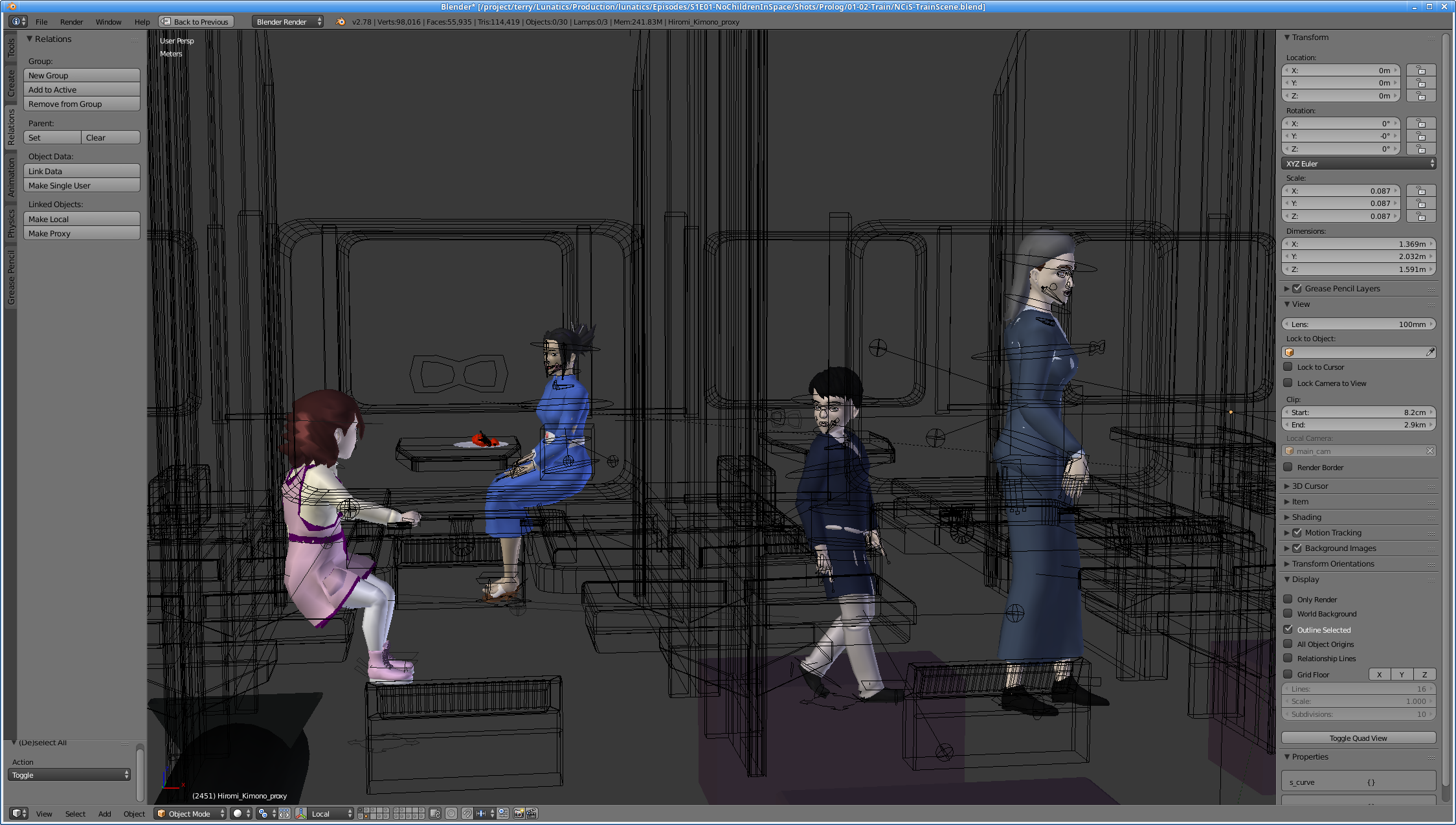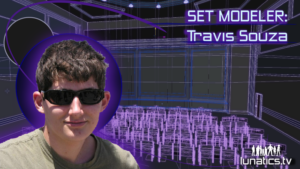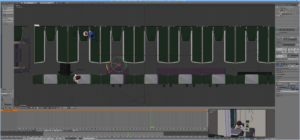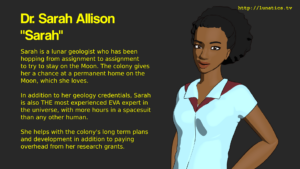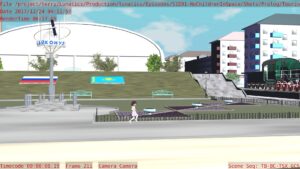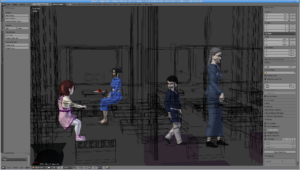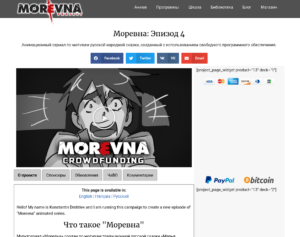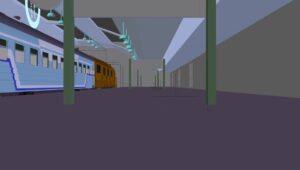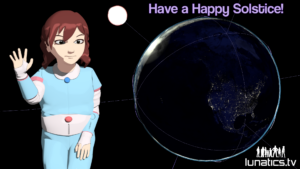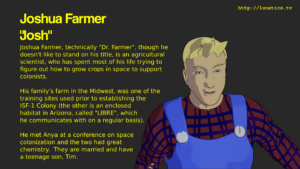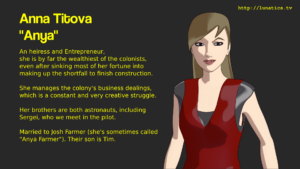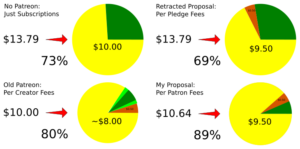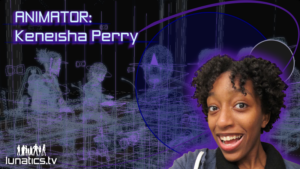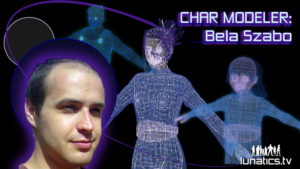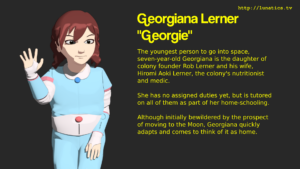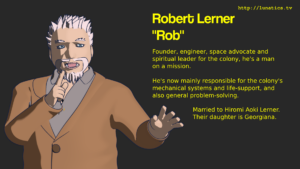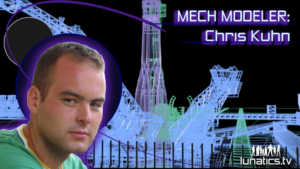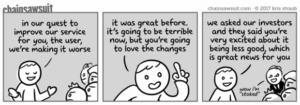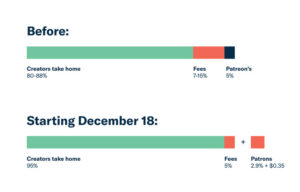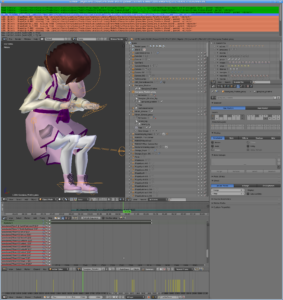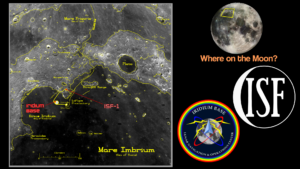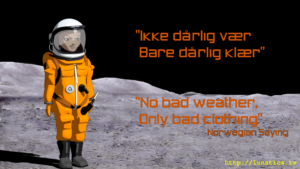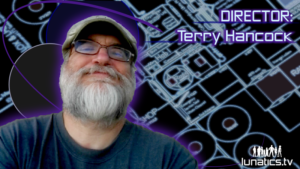Highlights
- Scare about Patreon changing their terms (But then they backed down).
- Helped Morevna project test their crowdfunding system.
- 6-Year Project Anniversary for “Lunatics!” (from 1st Kickstarter).
- Web statistics (still got those from the server!).
- Made several new computer reference manuals (and covers).
- Made the “Disco” Cast & Crew portraits.
- Discussed blocking for PC and TR sequences with Keneisha Perry, I think these plans are from much earlier.
- SVN Revisions: 602-705
I created a lot of promotional content this month, including finishing up the “disco” series of cast & crew portraits (I made use of the crew portraits quite a bit. I was less happy with how the cast portraits came out, because several of the cast photos actually cut off the very tops of their heads just a bit, and so I had to make up a little bit of the photo at the top, with varying degrees of success).
I suppose on a higher-budget operation, we might have commissioned new PR photos.
Eevee Toon Shading Tutorial for Blender 2.8
Continuing on the subject of what we can do about NPR in Blender 2.8, this tutorial by Marius Olberholster discussing using the NPR shading solution he and Wasili Novratidis have been working on for the new “Eevee” shader introduced in Blender 2.8.
This is an important issue for us, as we have been depending on the “Blender Internal” renderer in Blender 2.78 and before. So we’ll have to decide whether to stick with Blender 2.79 or earlier (which still has BI), or adapt to a new NPR approach with Blender 2.8 and later (which we’ll have to do if we want to take advantage of new features).
This should not affect production on “No Children in Space” (for which we’ll be sticking with Blender 2.7), but we do want to start considering what we’re going to do for later episodes.
What to Do About NPR in Blender 2.8?
In this video by Wasili Novratidis (from the Blender NPR community on Facebook), he explains some of the possibilities for doing non-photorealistic (NPR) rendering in Blender 2.8.
This is a big problem we’ll have to address soon. We’ve done all of our rendering for Lunatics! in Blender 2.78 (or earlier), using the “Blender Internal” renderer (which is faster and generally better for NPR animation work than the more popular, physics-based “Cycles” renderer).
On the other hand, some of the most-recently developed code in Blender addresses asset-management, which is an ongoing concern for us.
But the next version of Blender — 2.8 — will remove the “Blender Internal” renderer from Blender, which could potentially leave us kind of stranded. Either we move to a different renderer, or we’ll have to stick with the older version of Blender.
Almost certainly, we’ll be going no further than Blender 2.79 for work on “No Children in Space” (the first three of our episodes). But after that, we might need to switch, and that’s going to require a lot of experimentation and development work.
Set Modeler: Travis Souza
After arranging in 2014 for Keneisha Perry to use her work on Lunatics! for her senior internship in her degree program at California State University at Chico, we decided to try a pilot internship program in the Summer of 2015, with two interns.
The first to sign up was Travis Souza, who did the Mission Control Set and some sets in Baikonur, which are included in “No Children in Space, Part 1” that we are
Finding the Right Shot
One nice thing about the 3D graphics approach to animation is that you can find shots after or during the process of setting up the animation of characters, much as you would block and film a live-action sequence.
You can do a fair amount of discovery during this process, and sometimes we’ve gone with “found” shots rather than sticking to storyboard. Sometimes, it’s because we actually have better set models than we expected to and can show them off better, and sometimes it’s just because the 3D space allows for easier testing of ideas.
Characters: Dr. Sarah Allison
Joining the colony at the end of what is now the fifth episode, Sarah Allison brings some science into the show. Her primary interest is in lunar geophysics and the evolution of the landscape. She’s also the most experienced person alive at working in a spacesuit, and she combines that experience with Hiromi and Rob’s skills to work on improved designs later in the series.
Test Render – Touring Baikonur Montage
A test render of animation sequence of Georgiana skipping down the sidewalk in front of the train station. Part of a montage of Hiromi and Georgiana seeing the town the day before they leave for the cosmodrome.
A few things are still wrong with this shot, but we’re getting closer!
Character Animation from Pilot
Keneisha Perry has been making rapid progress on the character animation for the pilot. This is a snapshot of the animation as viewed in Blender.
Morevna Project: Episode 4 Fundraiser
Morevna: Open-Source Anime (Episode 4) – Morevna Project
Morevna: Open-Source Anime (Episode 4) A futuristic sci-fi anime series based on traditional Russian fairy-tale and created with open-source software. Facebook Google+ Twitter VK Email Story Backers Updates FAQ Comments Q: Where are the first two episodes? A: The first two episodes are not released yet, as we are releasing episodes out of order.
I’m taking a moment to plug another open-film project, by Morevna Project. This is a very worthwhile project created by Konstantin Dmitriev, based in Gorno-Altaisk, Russian Federation.
The story is derived from a Russian folktale about Marya Morevna and Koshchei the Deathless, but this is a modernized adaptation which frames the story with battle robots and other cyberpunk anime tropes. The full title is “The Beautiful Queen Marya Morevna: Underground”.
There have been two previously released short episodes: the “Demo” and “Episode 3” (leaving 1 & 2 to be released later).
It is created mostly with Synfig and Blender, with Krita used for creating digital cels, and Render Chan for rendering management.
Morevna Project also manages a lot of software, including multiple packages that we also use on Lunatics! (such as Papagayo NG) and some we are planning to adopt (like Render Chan). Konstantin even recorded a bit of dialog for us for the pilot (the voices of the mother and son on the train). Terry Hancock also did some editing on the English translation of the screenplay for Underground.
They are trying to raise $5000, primarily to pay animator Nikolai Mamashev, who recently produced a motion-comic adaptation of an episode from David Revoy’s Pepper & Carrot, “The Potion Contest“.
Be sure to check out the preview at the link!
Animatic Still – Train Arrival
This is a still from the animatic Terry Hancock has been working on. It shows the train arriving in the station in Baikonur. Anyone familiar with Baikonur would probably notice that there’s only an open platform.
We had a really excellent recording of a train arriving in a station that I wanted to use on the audio track, but it was obviously from a covered terminal, from the ambient sound. So we decided that 25 years is enough time for them to build a covered station — and so that’s what we modeled!
The train engine and cars were modeled by Chris Kuhn. The station was modeled by Travis Souza. Left to do: Terry Hancock will be adding materials, texture, and lighting to the set as well as scattered background characters. Keneisha Perry will be animating the main characters on this set (although technically, that’s in the next shot).
Set Modeler: Sathish Kumar
Most of the models needed for Lunatics! production are sets. Creating all of these is a complex problem, and there were a lot of sets made specifically for the beginning of the pilot, set in Kazakhstan on Earth, including several of the monuments and other landmarks around Baikonur.
Most of these were modeled by D. S. Sathish Kumar, based in Coimbatore, Tamil Nadu, India. Kumar founded his own studio, Spark Multimedia, in 2013. The studio makes extensive use of Blender and open-source software for work ranging from commercial architectural renderings to product demos, including 3D renderings, photography, music, and audio production.
His work can also be found on Facebook and YouTube.
Happy Winter Solstice 2017!
The astronomical Winter Solstice happens at 10:28 CST December 21, 2017.
(16:28 UTC). This is a holiday day time for many people around the world, so we hope you are having a good one, no matter how you celebrate.And so the days will once again be getting longer.
This doesn’t really happen on the Moon, by the way. The Moon’s orbit and inclination is more complex, and the Moon’s pole is only tilted about 1.5 degrees from the ecliptic, meaning that there’s almost no seasonal variation in solar illumination (which is part of why there can be places on the Moon that never get any sunlight, near the poles).
So the Solstices and Equinoxes are Earth holidays!
Characters: Tim Farmer
Tim Farmer, the son of Josh and Anya, is, as he says, “the only teenager on the entire planet”. He’s very active online and has a lot to do in the colony, but feels deprived of social opportunities.
Characters: Josh Farmer
Though he likes to call himself a “farmer”, it would technically be more accurate to call Josh an “agricultural scientist”. He has long been interested in the problems involved in raising food and fiber crops in space to support colonization, and the colony is relying on him to make it work.
Characters: Anya Titova
Anya is the colony’s business manager, a role she’s very well prepared for, having built space businesses of her own on Earth. She provided much-needed funding to reignite the project in the mid to late 2030, resulting in the colony starting up in 2040.
Anya’s company donated the Soyuz launch which carries Hiromi and Georgiana into space in “No Children in Space”.
Patreon Fee Policy Retracted
Patreon sent out a message this week saying they are canceling the new fee schedule rollout, due to all the bad feedback about it.I do think they made the wrong decision there, so I applaud their decision to rethink it. We’ll just have to wait and see what alternative they decide to roll out.
This did get me thinking about what they should do instead, though.
There were some advantages to what they were proposing, though it seemed kind of heavy-handed. Their initial announcement also made it sound like a cash-grab, because they didn’t immediately mention the change from aggregate to individual payments. It sounded like they were just going to take the transaction fees for themselves. However, in later clarifications, it became more clear what they were doing.
Still, it wasn’t the best approach, in my opinion.
I’ve sent them some feedback about that, along with an idea I like better, which is that go ahead with the fee changeover, but they charge once-per-patron-per-month, NOT once-per-pledge.
That’s because, to me as a patron and as a creator, Patreon’s role as a micropayment processor is one of its key features.
In order to illustrate why, I’ve worked out an example for a patron who chooses to support 10 different projects at $1 per month per project. In the picture, I’ve tried to illustrate the result with four different pie charts (rather hastily drawn — I apologize if the slices aren’t quite exactly correct).
The areal size of each pie is how much the patron is paying (“the size of the pie”). As you can see, they are not quite the same size for each case, due to larger fees being imposed on some cases. The actual amount in dollars is marked for each. All are nominally $10, of course, but some have more fees tacked on than others.
The yellow is how much money actually gets paid to the projects. The green represents banking transaction fees. And the orange is Patreon’s cut.
The upper left is without using Patreon at all — just paying monthly subscriptions of $1 each through the payment processor, at the same rates Patreon recently proposed (which are similar, though not identical to PayPal’s, by the way): a lot of fees get racked up on those tiny subscriptions, due to the extra 35-cent per-transaction fee. In the end, only 73% of what was paid would actually reach the projects.
You can see from this that one of the advantages of Patreon is simply that it improved the efficiency over paying separate subscriptions, just because you were only charged one time per month. Because, now, even with Patreon taking a cut of the money, it’s still more efficient: about 80% of the money reaches the projects (one problem Patreon was trying to solve is that the exact amount varied in complicated ways, and wasn’t clearly communicated to everyone, so this is only an estimate).
The recent proposal from Patreon is shown in the upper right: this not only transferred fees from the Creator side to the Patron side, thus increasing the total paid, it increased the transaction fees by returning to the same sort of separate subscription model that you could have done directly through PayPal before. But now, of course, Patreon’s cut makes it a worse deal: only 69% gets through. That’s starting to look pretty bad!
But there is one more option that Patreon could pursue, which I shared in my feedback to them: still move the fees to the Patron, but continue to charge pledges in aggregate so the patron only gets charged for a single transaction per month. Now, the efficiency actually goes up a bit to 89%, which is actually a little better than their prior efficiency. That’s just because if the transaction fees are charged just once for $10 instead of ten times for $1, the fees will be less.
Animator: Keneisha Perry
Keneisha Perry has been doing almost all of the character animation for Lunatics! She’s also responsible for much of the modeling and retopologizing, and all of the rigging of the characters she is animating.
She started working with us at Anansi Spaceworks during college (in 2013) as a way to help her get better with 3D character modeling, starting out with modeling the costume changes for the major characters and working up to creating additional characters, rigging, and animating over the last few years.
Her rigs, derived from the Rigify system in Blender (the free-software 3D suite we use for most of our animation work) but adding innovative new features, such as the skeletal face rig we are now using, which, along with the Blender Multicam technique and Papagayo NG tool chain, have made it possible to quickly animate complex character dialog and action scenes needed for our production.
Perry grew up expressing herself artistically through doodling, reading, singing, writing songs, playing video games, and writing poetry, but she found she had a passion for 3D art.
Her ambition was made feasible through the help of an after school program called College Track, that focused on making sure high school students could make it to, and graduate from, college. After finishing high school in 2011, she graduated from California State University at Chico in four years with a Bachelor of Science in Computer Animation and Game Development.In college, Perry was taught 3D modeling in Autodesk Maya (a popular, but expensive, proprietary 3D modeling software in the film industry). Anticipating the high cost of a professional license for the software, however, she started to learn Blender on her own.
She juggled her class projects while also teaching herself how to use Blender through many video tutorials and experimentation, and soon she was hooked. She developed a love of the Blender program and the unique features it offers. Her interest in Blender eventually led her to working on
Lunatics!
Rather than focusing on getting employed in a large studio with a traditional work environment and pipeline, Perry’s ambition has been to be her own boss through independent work from her own home. In addition to her work on the Lunatics! project with Anansi Spaceworks, she also maintains her own Patreon account under her Timid Clover alias.
Besides her 3D modeling and animation work, Keneisha Perry enjoys digital sculpting, 3D printing, comics, poetry, and singing.
Character Modeler: Bela Szabo
The task of converting the set of modelsheets drawn by Daniel Fu to 3D character models is a pretty tricky one. It requires a definite artistic sense of form in 3D, the ability to follow an inexact pattern, and of course, a great deal of skill with Blender.Three different modelers have created character models for Lunatics! However, it was Bela Szabo who established the basic models for the main characters, and really set the standard for how they would look.
Szabo is a self-taught 3D artist. He started modeling with Blender in 2011. Since then he has learned texturing and rigging as well. His main interest is character modeling, texturing and rigging in multiple 3D packages, but he is familiar with hardsurface modeling techniques too.
Before pursuing his freelance carreer in the CG industry, he studied finance, accounting, and software engineering. He currently resides in Hungary. Other interests include music — he’s been playing trumpet for 14 years in his hometown’s brass band.
Some of his models can be found on BlendSwap and a few others for sale on Turbosquid.
Characters: Georgiana Lerner
Georgiana Lerner is the youngest of the colonists, and becomes the youngest person ever to fly into space in the pilot episode, when she is just seven years old.
Characters: Hiromi Lerner
Hiromi Lerner is one of the two main characters we start with in the pilot episode. She’s a very creative person who takes on a medical support role to help the colony as well as trying to make the colony a much more human place to live.
Characters: Rob Lerner
Robert Lerner is the founder of the organization that sponsors the colony in “Lunatics!” and one of the first group of colonists on the Moon. He’s an engineer and a visionary who tends to see problems in technical terms.
Mech Modeler: Chris Kuhn
You can’t really do a hard science-fiction series like Lunatics! without a lot of space hardware, and creating that is a challenge for an expert mech modeler.We were extremely lucky to find Chris Kuhn in 2013 via his BlendSwap models, and his models have been a core element in our production design ever since. In addition to the models, of course, he has also provided extensive “constraints-based” rigging to control them, as many of these models have moving parts.
Kuhn has been a Blender enthusiast since 2009, and a self-described “sci-fi nerd” since the age of six. He specializes in high-poly mechanical models and constraints-based rigging. He is the author of multiple Blender books, as well as a co-author of the science-fiction novel Status Quo: The Chronicle of Jane Doe (with James Clayton). You can also find his models on his Facebook Artist page.
Kuhn also has an electronics background (with a specialty in RF systems). He enjoys traveling, working on cars, and building semi-functional gadgets with spare parts. He was drawn to the Lunatics! project by both the story and characters – the idea of exceptional people going to space seemed a tad more realistic than what you typically find at the movies.
In addition to his BlendSwap site, Kuhn also sells commercial 3D models through his TurboSquid “Kuhn Industries” site.
Chris knows the Blender constraints system better than anyone I know of! And his rigs really make the animating easy for us!
Ch-Ch-Ch-Changes…
Chainsawsuit by Kris Straub – three panels daily
http://chainsawsuit.com/comic/2017/12/07/improvements/
As you know, we have not yet released our pilot, so you have not yet been charged anything, which may make this seem a little academic. However, Patreon has just announced some policy changes which will affect you.
Honestly, they’re not really that bad, although some people have been freaking out about them (see the comic for one opinion!).We’re also firming up our own plans for release and distribution, and since things are going to be stirred up anyway, this is probably the best time to make some needed changes in our reward levels.
So here’s what’s changing…
1 – New Patreon Fee Policy
The fees are being shifted to the Patron’s side, rather than the Creator’s:
I’ll spell this out for each reward level below, but the most egregious impact is on $1 pledges, which now cost you $1.38. Previously, you were charged exactly $1 and we would get about $0.80 from it. Now, you will be charged $1.38 and we will get $0.95. The fee looks very much like they modeled it on the way PayPal charges, and it has the same effect of costing more on small pledges.
Patreon has included a FAQ on this, which you should probably read.
The impact of the fees becomes rapidly smaller for larger pledges. Our $20 “PREMIUM” pledge is now going to cost you $20.93, of which we will receive $19.
One thing that is nice is that the fees now follow a simple formula, so we can calculate them for you.
2 – Streaming Reward Level Merge
We’ve settled on releasing our Patron streaming release through Vimeo Plus. This allows us to do the controlled access during the advance streaming period before the episode goes into public release, allows plenty of bandwidth and supports our high-definition video files.
However, it doesn’t really make sense to have “standard” and “high-def” streaming, as currently listed on our reward levels. It’s much simpler to just upload one high-definition file and let Vimeo offer it to you at lower resolution if you prefer.
So, what previously were called the $3 “BASIC” and $6 “HD720” reward levels are going to be merged.
I say “merged”, but actually what’s going to happen is that they will be deleted and a new $5 “STREAMING” level will be created. When I delete the existing rewards, four of you will be bumped into the “No Reward” category, and it will be up to you to select the STREAMING level (I don’t have a way to do that for you, even if you’re pledged for more than $5 already).
Since I imagine you’ll be looking at your account anyway due to the Patreon changes, I’m hoping this is the best time to make this change.
3 – Limited Source Edition DVDs
Our original plan was to release fairly standard TV-series / OVA DVDs with several episodes per disk (“volumes” of the series). Since these would be pretty infrequent, it seemed odd to mention or include them here in our per-episode Patreon account.
However, there’s also the question of source code. If you are here because we’re an Open Movie project, you may be looking forward to a “source edition” of the episodes, which contains tutorials, Blender files, and other material that went into creating the episodes — just like you got from the Blender Foundation movies. And the source code for all the episodes on a typical volume will run into multiple, maybe dozens of gigabytes, which could become a fairly expensive multi-disk release.
So we decided to solve both problems by announcing a new special edition just for Open Movie fans.
These will be released once-per-episode, to go along with our Patreon cycle, and they will contain:
- The finished episode in DVD format (i.e. you can just play it on a DVD player)
- A 1080P high-definition digital copy of the episode.
- Video tutorials recorded during the production cycle for the episode.
- Behind-the-scenes featurettes.
- Collected source files (mostly Blender files).
- Any other extras we can think of!
In other words, it will be the episode, plus source and documentation.
These will be in cardboard DVD wallet packaging with cover art and liner notes, in a short run (probably 300, which is the minimum for replicated “pressed” DVDs). Once the initial order is sold out, we won’t be reprinting this limited edition.
This type of DVD is intrinsically more durable than one-off DVDs we can burn on our computers and distributing copies is probably the best way to ensure the data doesn’t get permanently lost. So providing us with a good archival source-code backup is another benefit of doing this release.
Ways to get this release:
- $50 and above reward level here on Patreon.
- A to-be-announcing crowdfunding campaign (probably Kickstarter).
- Remainder sold through the webstore we will be setting up at release time.
Some uncertainties to keep in mind about the disks:
- We have to raise enough money to cover the print run. This will be the goal of the Kickstarter.
- Source code may be distributed on multiple disks, it might not always correspond exactly to the episode on the disk. The aim is for it to be complete as a set.
- We don’t yet know how big these will be (single-layer, double-layer, double-sided, or multiple disks).
- The crowdfunding and Patreon disks will be in multifold sleeves, but the remaining direct-sale disks may be in generic envelopes (because the minimum order on sleeves is just 50, compared to 300 for disks, and so we can save a bit by just printing sleeves for pre-ordered disks).
Fifty dollars may seem like a lot for 15 minutes of animation. I get that. Some of that is because of the short run. Some is because there’s also a lot of source data on the disk. And some is because this is ultimately fund-raising to try to pay the artists who produced it. In fact, this is pretty similar to what was charged for pre-sale DVDs for the Blender Foundation Open Movies — and they of course, were generally under 15 minutes in duration as well.
When we get to that point, we intend to release a cheaper multi-episode “Original Video Animation” (OVA) disk (but with no source data), primarily intended for animation and science-fiction audiences.
4 – Sponsorship Levels
We’ve had a $50 SILVER SPONSOR level for some time, so it seemed logical to add a $100 GOLD SPONSOR level. It’s also a nice geometric step between the “stuff” levels and the commercial sponsorship levels.
We do also have the ability to do opening and closing credits fullscreen / moving logos for higher rates. These are expensive enough that the Patreon fees would get outrageous, though. Contact Terry Hancock (digitante at gmail dot com) directly if your company would be interested in these higher-profile episode or volume sponsorships.
REVIEW
New reward levels, with actual costs and payout amounts:
- $1 WATCHER: $1.38 / $0.95
- $5 STREAMING: $5.50 / $4.75
- $12 DOWNLOAD: $12.70 / $11.40
- $20 PREMIUM: $20.93 / $19.00
- $50 SILVER SPONSER: $51.80 / $47.50
- $100 GOLD SPONSOR: $103.25 / $95.00
- $300 CORPORATE SPONSOR: actual cost $309.05, payout $285.00
- $1000 LOGO SPONSOR: actual cost $1029.35, payout $950.00
$50 and $100 levels now also include the Special Source Edition DVDs.
I will be continuing to revise the reward levels. I am adding the new STREAMING level immediately, and will remove the two prior levels on Monday (hopefully giving those patrons a chance to read this so they know what’s going on).
[EDIT: I have realized that I over-promised slightly in this article. Namely, I said the DVDs would be a pressed / replicated run. That might not be true.We will only do that if there are enough sold here and through other outlets to cover the cost of the 300-unit run. I will do it even if it just breaks even, but if we would actually lose money that would otherwise go to artists, then I’m going to fulfill those orders with Millenniata archival one-off DVD-M media, as we have done in previous Kickstarters. These are also pretty durable DVD media (theoretically, they are just as durable as pressed DVDs), but they don’t give us a minimum run cost.
I’ll have to do the math, but I think this works out to somewhere between 50 and 100 units. Right now, there’s just one order, though.]
New YouTube Channel
I’ve just created a NEW YOUTUBE CHANNEL. Early on in the project, I posted “Lunatics!” content on my personal YouTube channel. Later I migrated mostly to Vimeo, and haven’t really maintained my YouTube channel very well.I prefer Vimeo substantially as a publishing platform, but it’s really hard to beat the visibility of YouTube. So I’ve finally created an account just for “Lunatics!”
So far, it’s just got the trailer, but I plan to mirror more public content up onto the channel.
Character Designer: Daniel Fu
Designing characters for Lunatics! was an interesting challenge. They needed to be realistic enough to work with the highly realistic sets and props which were designed for real human proportions, but they also needed to be stylized and expressive enough to work as cartoon characters without creating too much of an “uncanny valley” effect.
For this important task, we turned to Daniel Fu, who we met while working on our Light Princess game project from 2000-2002. Although that project was never completed for software reasons, the artwork was promising, and Fu’s work from that era seemed like a good match to what we were hoping to do with Lunatics! He also had continued working on other projects, which gave us confidence that he’d be an excellent choice for the job. We commissioned him to do some concept art and then raised money through a Kickstarter campaign to pay him for the work on lineups and modelsheets that would allow us to develop 3D characters.A graduate of the University of Texas, where he studied Architecture, Daniel Fu has been a comic artist since before 2000. Prior to his work on Lunatics!, his best-known series was probably The Retriever, which ran from 2006 to 2010. In 2017, he illustrated a comic book adaptation, Axanar: Trial by Fire, written by Trey McElwain, based on the Axanar fan film production by Alec Peters.
Currently he is working as the Interactive Art Director for Spiceworks, where he designs user interfaces. He also has a freelance portfolio for his UI/UX work.
Oops! That’s not right!
Sometimes files get out of sync with each other! This is one thing that can happen when you have character files that are not the same as when a scene was animated. Part of the challenge of an ongoing project is being able to improve on 3D models without breaking previous scene files that used them (which is unfortunately, what happened here).
This where digital asset management and version control comes into play, and why we need to improve our virtual studio system.
In this case, we had to rollback some files in Subversion and will probably have to re-merge some of the animation actions.
Colony Region Map
Another slide created for our ArlingCon 2017 presentation in Arlington, Texas earlier in 2017. We gave our colony a specific location on the Moon, and built the story around this premise, including other installations in the area.
Lunar Transportation System
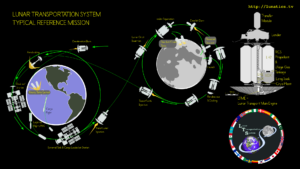
In “Lunatics!”, the method for getting people to and from the Moon for support of Iridium Base and also the ISF-1 Colony is the “Lunar Transportation System” or “Moon Shuttle”. It’s roughly analogous to the “Space Transportation System”, which was the official name for the US “Space Shuttle” program.
It’s a mostly reusable system, with only the fuel tanks being expended during the flight. The LTS can make just a few flights a year to the Moon, which sets the limitations for our colony’s logistics.
No Such Thing as Bad Weather
There’s a Norwegian saying that there’s no such thing as bad weather, only bad clothing. Life in space will be possible with the right sort of preparedness, and that’s the sort of attitude “Lunatics!” is all about.
Slide from ArlingCon 2017 talk.
Director: Terry Hancock
Lunatics! is the product of a deep collaboration between the series creators, Rosalyn Hunter and Terry Hancock, but Hancock is most responsible for the visual appearance and direction of the project.As a free-software and free-culture advocate for the last couple of decades, he’s also responsible for producing the project — with the production design, choice of animation toolchain, and indeed, the decision to make it a 3D animated, web-delivered, anime-inspired series and to release it all under an open-film, free-licensed business model.
Hancock has been obsessed with astronomy, planetary sciences, and astronautics from a young age. He’s been fascinated with science-fiction, animation, and movies of all kinds for many years, and he’s been learning and using free-software tools for multimedia production for nearly two decades.
He wrote extensively on free-software tools, applications, and philosophy for Free Software Magazine from 2004 to 2011. He also worked on an early free-culture artistic game project based on George MacDonald’s The Light Princess, which produced interesting art and concepts although it was never completed as a game (it was also how he met Daniel Fu, who did the character design work for Lunatics!).
As a space-advocate, he was involved in National Space Society chapters in Dallas and Los Angeles. In the 1990s and early 2000s, he worked as a professional astronomer, involved in early extra-solar planet surveys and star formation research as well as technical work connected with the Hubble Space Telescope (NICMOS) and JPL‘s Infrared Processing and Analysis Center.
Aside from a life-long interest in science-fiction movies and animation, Hancock was also a film major at the University of Texas for two years, during which time he studied film history and cinematography, although he ultimately graduated with a degree in astronomy.
His approach on Lunatics! has been to use a 3D-animated NPR (“Non-photorealistic”) style which derives from many influences: relatively realistic anime designs, space concept artists, science-fiction cover artists, and other animated productions. This style allows us to have a realistic environment and proportions with relatively little danger from the “uncanny valley”.
The extensive moving camera work and dimensional shots enabled by the use of the Blender 3D animation toolchain allows for a highly immersive experience, while the bright, 2D flattened shading gives it an artistic consistency that ties it together and also keeps it feasible on our shoestring budget (no small consideration!).
This project continues to involve innovation with the back-end toolchain in particular. We are essentially founding a virtual animation studio with this project, and much of Hancock’s work on the project is involved with this technical side of the project as well.
Video Summary
